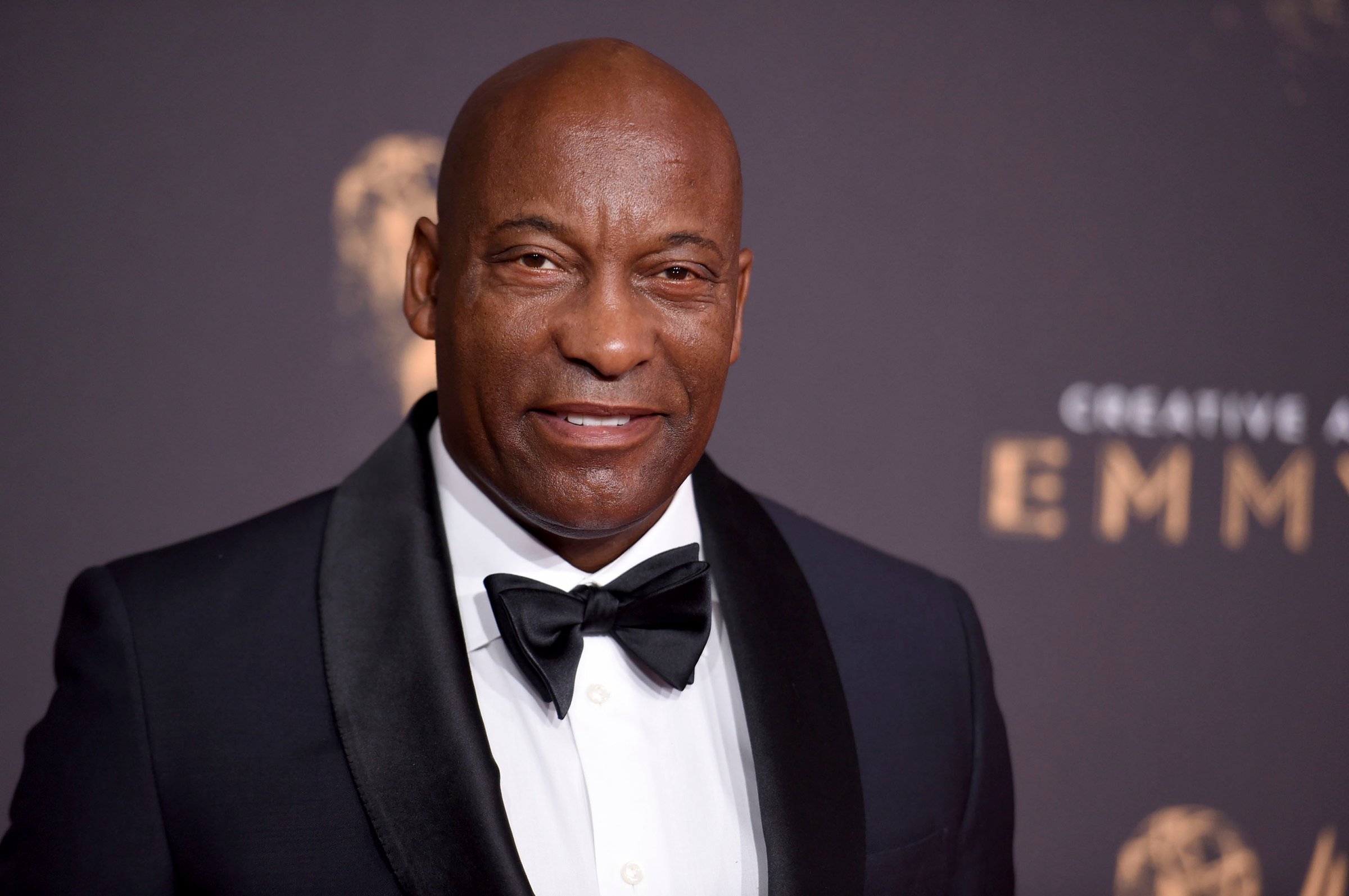
The Oscars So White debacle of 2015 opened a galvanizing conversation about how filmmakers of color might carve out greater opportunity in Hollywood. But John Singleton, who died Monday at age 51 following a stroke, was at the forefront of that battle long before we had a hashtag for it, ushering in a new era of creativity and boldness among black filmmakers. He showed through his work just how boundless the possibilities were.
Singleton’s 1991 debut Boyz n the Hood—starring Cuba Gooding Jr. and Ice Cube as young men coming of age in South Central Los Angeles, where Singleton himself grew up—dealt frankly with inner-city violence, facing the prevalence of guns and drugs head-on. But to say the movie is “about” violence is to grossly oversimplify it. Singleton, barely into his 20s when he wrote and directed the film, told a story about the tragedy of black men killing one another—but even that was only a small story within a bigger story. Boyz n the Hood is also about parents who strive to raise their kids with sturdy values, about neighborhoods where lawns are kept impeccably tidy as a point of pride. About young people who want to do what’s right, even when circumstances threaten to pull them in another direction. Although Boyz n the Hood is set in a specific time and place, it’s a story that’s universal—and so beautifully and astutely made that it still feels fresh nearly 30 years later.

Boyz n the Hood screened in the Un Certain Regard section at Cannes in 1991, where it received a 20-minute standing ovation. It was nominated for two Academy Awards, one for screenplay and one for direction. Singleton was the youngest person to be nominated for Best Director, and also the first African-American. As an emerging black filmmaker dealing with societal issues in the early 1990s, Singleton was hardly alone: Mario Van Peebles, Matty Rich, and Albert and Allen Hughes—among others—hit the scene at the same time, and Spike Lee had already broken through with his 1986 She’s Gotta Have It. But Singleton, unlike some of those other filmmakers (Lee one of the obvious exceptions), forged a long-lasting and varied career for himself as a director, writer and producer, both in film and, more recently, in television. He was one of the creators of Snowfall, set in the early days of the crack cocaine epidemic in Los Angeles in the 1980s.
He forged a career out of taking chances. In 2000 he mounted a remake of the blaxploitation favorite Shaft, starring Samuel L. Jackson, reworking the material into a brutal but effective vigilante story in which a spoiled white rich kid (Christian Bale) struts around thinking he can get away with murdering a black man, until the hero puts him straight. Singleton’s Shaft was a rough breath of fresh air in Rudy Giuliani’s New York—not a picture that pitted black against white, but a revenge fantasy that, in its blunt vision, showed how violence serves no one, and looking for one place (or one race) on which to lay blame is no solution at all.

Singleton was just as fearless as a producer of other filmmakers’ work, like Craig Brewer’s atmospheric 2005 love letter to Memphis, Hustle & Flow, starring Terrence Howard as a complex and not always likable small-time drug dealer and pimp. In 2007 Singleton went on to produce Brewer’s even more daring Black Snake Moan, in which Jackson plays a disillusioned, God-fearing juke-joint bluesman who sets out to redeem a sort of fallen angel, played by Christina Ricci. At one point, Jackson’s character chains Ricci’s to a radiator, as part of an effort to rid her of the demons that he believes plague her. That’s a pulpy, sensationalistic image, but once we’re lured in, we see the movie’s soul: This is really a fable about damaged people helping one another to become their best selves.
Singleton saw that kind of complexity everywhere. That’s because it was more important for him to see people than to just tackle issues. In an extraordinary scene from Boyz n the Hood, Laurence Fishburne’s Furious Styles, the father of Gooding’s character, Tre, drives Tre and his friend out to Compton and points out a billboard advertising “cash for your home.” Other young people from the neighborhood, and one old man, gather round as Furious—a veteran who’s now a businessman—uses the billboard to craft a lesson about gentrification and the importance of keeping black neighborhoods alive with black-owned businesses. He also explains how the white power structure distorts the reality of black communities to its benefit.
It’s one of those scenes that’s potentially deadly: Done wrong, it could be didactic and preachy. But Singleton’s conviction, channeled through Fishburne, is a rippling electric charge, and yet another indication of his fearlessness as a filmmaker. Singleton spoke volumes through his movies, and through the projects of others that he helped bring to life. But he also spoke like a man who knew how to listen—one who knew that listening, not just talking, is the way to keep the conversation going, and the only path to fixing a world that can sometimes feel irreparably broken.
More Must-Reads from TIME
- Breaking Down the 2024 Election Calendar
- How Nayib Bukele’s ‘Iron Fist’ Has Transformed El Salvador
- What if Ultra-Processed Foods Aren’t as Bad as You Think?
- How Ukraine Beat Russia in the Battle of the Black Sea
- Long COVID Looks Different in Kids
- How Project 2025 Would Jeopardize Americans’ Health
- What a $129 Frying Pan Says About America’s Eating Habits
- The 32 Most Anticipated Books of Fall 2024
Contact us at letters@time.com